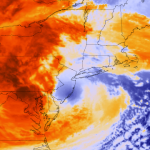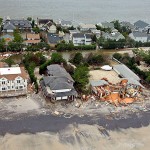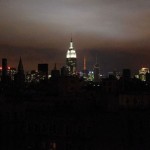 Ed Blakely indicts the planning profession for failing to protect our communities from the threat of a changing climate. How can we plan places that serve as bulwarks from the worst physical traumas, while providing economic and social resiliency?
Ed Blakely indicts the planning profession for failing to protect our communities from the threat of a changing climate. How can we plan places that serve as bulwarks from the worst physical traumas, while providing economic and social resiliency?
Only a week ago, scientists and professionals all over the world were appalled by the conviction and sentencing of Italian Seismologists for failure to predict an earthquake in L’Aquilla, Italy. This seems absurd. Earthquakes are not really predictable. But, the potential damages of Sandy were well known long before the storm struck the East Coast of the United States on October 29, 2012. Planners and city officials approved developments on the New York, New Jersey and Carolina coast in areas of known high risk. Why shouldn’t they go to jail?
I advance this argument to get the attention of our planning profession, which has been complacent and diffident when we know better. We blame our political masters. But an engineer who knowingly gives bad advice losses his/her license. We have to wake up. Sandy should be our line in the sand. We cannot say we are agnostic about climate change and the forces of nature. We know all about these issues and we have a duty to communicate this information clearly and forcefully to our communities. Climate change may be unsettled in degree and direction or even cause. But the information on increasingly severe weather is settled science. Even skeptics agree on this. So, why should planners endorse developments in dangerous areas? Even a 1 in 100 (year-actually possibility) is too great a risk, particularly when a structure will not survive even a modest flooding or increase in real temperatures.

Damage to New Jersey coast, By U.S. Air Force photo by Master Sgt. Mark C. Olsen [Public domain], via Wikimedia Commons
Where to Begin
Planners throughout the profession need to take a direct role in re-imagining and re-crafting communities for a severe weather era. This means every community in the nation will have to be re-imagined for a new era of resilience and adaptation. The current land use regimes may have to be re-thought, and in some cases totally abandoned. Communities fear loss of property values if their area is considered at risk. But the market has already, or will soon, reach that determination through insurance spikes and price declines. Better plan to improve a community to make it more resilient rather than wait for it to decline and die. Second ring suburbs are declining across the nation, illustrating this phenomenon already. Those places near water with no sea walls or appropriate mitigations will be among the first to be abandoned. Unfortunately, many seniors have elected these as their retirement homes.
Second, planners need to lead community weather and habitat risk analysis for every city. In many places, waterside, hillside and even low lying developments on wetlands or unstable ground could give way in severe rains, crack in prolonged droughts, or succumb to potential water or land movements unimagined at the time of construction. Too many suburban developments are already untenable for a severe weather future. In addition, climate change is altering wildlife and insect habitats leading to the spread of disease and other dangers to communities.
Third, auto dependency is a new hazard. Sandy reflects the dangers of communities so totally dependent on the automobile, that in an emergency, residents have no capacity to obtain routine living items like food without a car. Any form of urban community that cannot be reached by some form of mass transit or provisioned with food and water will be too risky to live in within the decade. This situation is exacerbated by the fact that gas stations are closing all over the nation because they are environmentally hard to permit and are no longer profitable.Finally, every community must be re-planned for energy, water and food self-sufficiency in time of crisis, like Japan. There is no reason that schools, fire stations and other buildings in every community cannot be re-designed so that they capture and store, as well as recycle, bio mass, sun and even wind energy. These systems should feed to the grid in good times and give back to the community in disasters. Similarly, we should, like Japan, build sports fields, median strips, and other areas with fresh clean water cisterns under them. Within every 400 to 600, or 800 by 800, square meter block there should be locally grown foods combined with food shelters for storage of canned and other long lasting goods for emergencies. Food should be grown in parkways and other areas, along with tree planting for berries and fruits as part of community development and environmental protection.
The Future
Our future necessitates increased community reliance. By building communities that are heterogeneous in age, lifestyle, and race to fit the realities of the present, we can cultivate the tolerance and cohesion necessary to confront our looming challenges. Maybe a little bad weather will do what good intentions and politics have not been able to achieve; give all Americans a sense that “we are all created equal and must work together to pursue happiness”. This would be a well-planned future for America and one built on hope, not fear.
Edward J Blakely is honorary professor of urban policy at the University of Sydney. He was Executive Director of Recovery in New Orleans (2007-2009). His book My Storm: Managing Recovery in New Orleans in the Wake of Katrina, (Univ of Pennsylvania Press, 2011) recounts his experiences in New Orleans and other disaster recoveries.
http://www.planetizen.com/node/59142?goback=%2Egde_116818_member_183865999

Speak Your Mind
You must be logged in to post a comment.